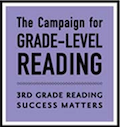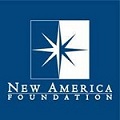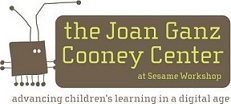New report argues for more emphasis on using technology to help
parents and educators support young learners
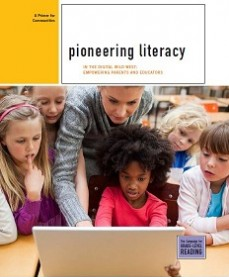
Digital apps designed to teach young children to read are an increasingly large share of the market, but parents and educators have little to no information about whether and how they work, according to a report released today by the Campaign for Grade-Level Reading.
The report, Pioneering Literacy in the Digital Wild West, shows that most of the skills targeted by children’s reading apps are very basic and do not address higher-level competencies that young children need to become strong readers.
At the same time, several nascent but promising initiatives in early childhood programs have taken different approaches to technology, harnessing its power to assist teachers and parents in helping children learn to read, according to the report, written by experts in early literacy and technology at the New America Foundation and the Joan Ganz Cooney Center at Sesame Workshop.
“Parents are a child’s first and most important teachers, and technology will never change that,” says Ralph Smith, the managing director of the Campaign for Grade-Level Reading. “But technology can help us connect with parents of young children, and it can help families promote early literacy skills. Many parents, though, need guidance in choosing the right technology and knowing how to use it.”
The Campaign is a collaborative effort among foundations, nonprofit partners, states and communities to increase the number of low-income children who read proficiently by the end of third grade. Currently, only a third of U.S. fourth graders and barely one in six low-income children hit that mark, contributing to wider achievement gaps and higher dropout rates.
While many digital products claim to teach reading, the report’s scan of the app marketplace uncovered a heavy emphasis on teaching letters, sounds and phonics. A snapshot of the iTunes App Store’s most popular paid literacy apps showed that 45 percent targeted letters and sounds and half targeted phonics, but only 5 percent targeted vocabulary.
Scores released Dec. 6 by the National Assessment of Educational Progress showed that students’ vocabulary skills are tied to reading comprehension skills. On average, students from low-income families, as well as black and Hispanic students, received lower scores on the NAEP vocabulary test compared to white students and those from higher-income families.
None of the iTunes paid apps in the scan focused on comprehension, grammar and the ability to understand and tell stories. (See chart below.)
“Technology changes so quickly that browsing the app store can feel like a digital version of entering the Wild West,” the report notes. “Parents and educators face a fast-growing array of products purporting to help their children learn to read but receive little information on how or if these products live up to their claims.”
The report points to pioneering projects that help the adults in children’s lives – especially those in disadvantaged families – use media to foster children’s language development and eventual reading skills. Examples include using on-demand video for parenting education, social media to provide new resources to parents and teachers, and daily texts and web-based messages to prompt storytelling and conversation. The report cites creative ways to use technology emanating from state libraries, public television, home-visiting programs, Sesame Workshop, the Fred Rogers Center, the Erikson Institute, the Ounce of Prevention Fund, National Center for Family Literacy and more.
“Preparing children to be capable readers by the time they complete third grade is a fundamental national goal,” says Dr. Michael H. Levine, executive director of the Joan Ganz Cooney Center at Sesame Workshop and an author of the report. “Our report documents that the explosion of digital technologies can and must be tapped to close critical gaps, especially for those children who use media heavily and whose academic performance is substandard.”
The report offers several strategies for policymakers and community leaders who can help parents and teachers “homestead” this digital Wild West, including conducting community audits to determine whether and which families have access to technology and media and how they use it; providing teachers with training on technology as a learning tool; creating physical places where parents and educators can come together to experiment with various media platforms to foster literacy; and emphasizing digital media’s potential for learning and conversation between parents and children, not just for games that children play alone.
“Whether it’s reading books, watching videos or using apps, parental involvement and qualified teachers are key to making that time enriching for the child,” says Lisa Guernsey, director of the Early Education Initiative at the New America Foundation and a report author. “When parents spend time with their children, talking with them about an app or asking questions about the story in an e-book, that experience is a launch pad for building early literacy skills.”
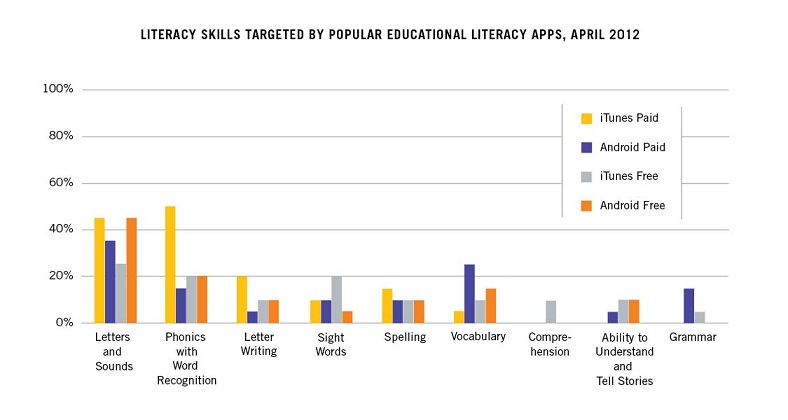
In addition to commissioning this report, the Campaign for Grade-Level Reading is working with partners on a Technology for Successful Parenting initiative.
Contact:
Phyllis Jordan
pjordan@thehatchergroup.com
Clara Hogan
hogan@newamerica.net
Catherine Jhee
catherine.jhee@sesame.org
###
The Campaign for Grade-Level Reading is a collaborative effort by foundations, nonprofit partners, states and communities across the nation to ensure that more children in low-income families succeed in school and graduate prepared for college, a career and active citizenship. The Campaign focuses on the most important predictor of school success and high school graduation: grade-level reading by the end of third grade.
The Early Education Initiative is part of the Education Policy Program at the New America Foundation, a nonprofit, nonpartisan think tank in Washington, D.C., that invests in new thinkers and new ideas to address the next generation of challenges facing the United States.
The Joan Ganz Cooney Center at Sesame Workshop is an independent, nonprofit research center that is fostering innovation in children’s learning through digital media. The Cooney Center conducts and supports research, creates educational models and interactive media properties, and builds cross-sector partnerships. The Cooney Center is named for Sesame Workshop’s founder, who revolutionized television with the creation of Sesame Street. Core funding is provided by the generous support of Peter G. Peterson and Sesame Workshop.
